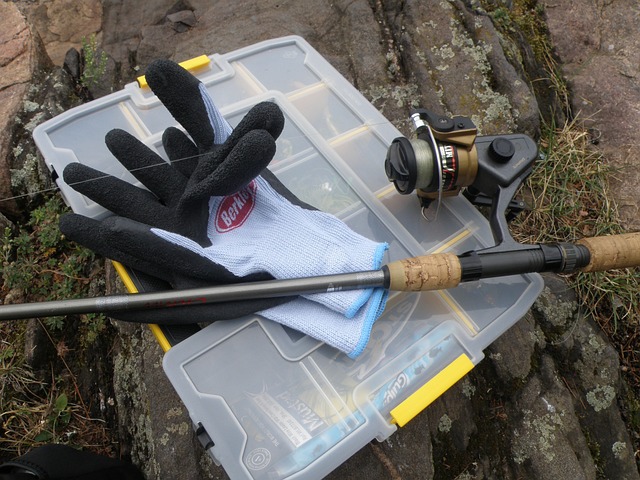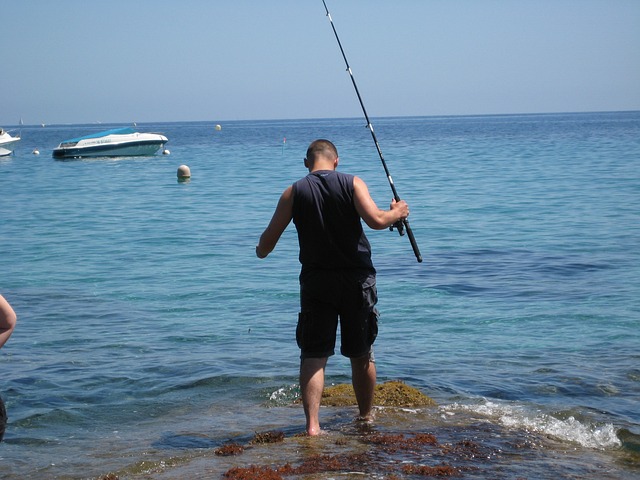Are you ready to embark on an epic saltwater fishing adventure? Well, you’ve come to the right place! In this guide, I’m going to spill the beans on my top picks for the best saltwater lures inshore. Trust me, these lures are absolute game-changers when it comes to landing that big catch!
Picture this: you’re standing on the shoreline, the salty breeze in your hair, and the anticipation coursing through your veins. But here’s the thing – without the right lures, your fishing expedition can quickly turn into a disappointment. That’s why I’m here to guide you through the world of saltwater lures, sharing my personal experiences and insights along the way.
So, whether you’re a seasoned angler looking to spice up your tackle box or a beginner eager to dive into the world of inshore fishing, let’s dive right in and discover the best saltwater lures that will make those fish go wild!
Understanding Inshore Saltwater Fishing
Before I dive into the exciting realm of saltwater lures, let’s take a moment to understand what inshore fishing is all about. Inshore fishing refers to the act of casting your line and targeting fish in nearshore areas, such as bays, estuaries, flats, and along the coastline.
One of the great things about inshore fishing is that you don’t need a fancy boat or deep-sea fishing gear to enjoy it. In fact, many anglers find the thrill of hooking into big fish just a stone’s throw away from the shore absolutely exhilarating.
In these shallow and often more sheltered waters, you’ll encounter a wide variety of fish species, including redfish, trout, snook, flounder, and even the occasional tarpon. Each of these species has its own unique feeding habits and preferences, which brings us to the importance of selecting the right saltwater lures.
When it comes to inshore fishing, using the correct lures can make all the difference between a successful fishing trip and going home empty-handed. The right lure not only attracts the fish’s attention but also imitates the natural prey they’re accustomed to feeding on. It’s like tempting them with their favorite meal!
Now, let me share a little secret with you. Over the years, I’ve discovered that the success of inshore fishing heavily relies on understanding the water conditions, the target species, and their feeding habits. Once you have a grasp on these factors, selecting the best saltwater lures becomes a piece of cake.
Criteria for Selecting the Best Saltwater Lures Inshore:
Now that you understand the essence of inshore fishing, let’s dive into the criteria for selecting the best saltwater lures. Remember, the right lure can entice even the most finicky fish to strike. So, here are some important factors to consider when choosing your inshore fishing arsenal:
- Versatility: Look for lures that offer versatility in their presentation and can imitate various types of baitfish. Inshore environments are home to a diverse range of prey, so your lure should be adaptable enough to mimic different species.
- Size, Color, and Action: These three elements play a crucial role in attracting fish. Consider the size of the baitfish in the area and choose a lure that closely matches their dimensions. As for color, it’s best to match the predominant hues of the local baitfish or experiment with contrasting colors to trigger aggressive strikes. Lastly, the action of the lure, such as its movement and vibrations, should mimic the natural behavior of prey, enticing the fish to strike.
- Lure Types: Inshore fishing offers a variety of lure options to choose from. Some popular choices include soft plastics, topwater lures, jigs, and spoons. Each type has its own strengths and can be effective in different situations. It’s important to have a mix of these lures in your tackle box to cover various fishing scenarios.
Now that you have the criteria in mind, let’s explore my top picks for the best saltwater lures inshore. These lures have proven time and again to be reliable and effective in enticing those elusive saltwater species. Trust me, you’ll want to add them to your arsenal for your next fishing adventure!

My Top Picks for the Best Saltwater Lures Inshore:
1. Soft Plastics
When it comes to versatility and lifelike presentation, soft plastics are hard to beat. These lures come in various shapes and sizes, mimicking baitfish, shrimp, and other natural prey. My top picks for soft plastics include paddle tails, shrimp imitations, and jerk baits. They can be rigged with weighted hooks or jig heads and fished with a variety of techniques like steady retrieve, twitching, or hopping along the bottom. Trust me, these soft plastics have a knack for fooling even the wariest of inshore predators.
2. Topwater Lures
There’s nothing quite like the heart-pounding excitement of a fish exploding on a topwater lure. These lures create a commotion on the water’s surface, attracting fish from below. My go-to topwater lures are poppers, walkers, and prop baits. Poppers create a popping sound that drives fish crazy, walkers have a side-to-side swimming action, and prop baits simulate wounded baitfish with their spinning blades. Cast these lures near structures or over grass beds and retrieve them with pauses and twitches to elicit explosive strikes that will leave you grinning from ear to ear.
3. Jigs
Jigs are versatile workhorses that excel in various inshore fishing scenarios. Whether you’re targeting redfish, trout, or flounder, jigs are a reliable choice. Bucktail jigs, paddle tail jigs, and shrimp jigs are among my favorites. The key to success with jigs is to vary the retrieve speed, bounce them off the bottom, and experiment with different colors to match the local forage. With their enticing action and ability to imitate wounded baitfish, jigs are sure to entice strikes from hungry predators.
4. Spoons
When it comes to simplicity and effectiveness, spoons are a tried-and-true option. These shiny, metal lures mimic the flash and movement of small baitfish. They are particularly effective for species like trout and redfish. Choose spoons in different sizes and designs, such as silver or gold, and experiment with different retrieval speeds. Casting and retrieving spoons with a fast, erratic motion can trigger aggressive strikes from predatory fish patrolling the shallows.
These are my personal top picks for the best saltwater lures inshore. Remember, each lure type has its own unique characteristics and works best in specific situations, so it’s important to experiment and find what works for you in your local fishing grounds. Pack your tackle box with these versatile lures, and get ready for some thrilling inshore action that will make your fishing buddies jealous!
Stay tuned for the next section, where I’ll share additional tips and techniques to make your inshore fishing experience even more successful.
Additional Tips and Techniques for Successful Inshore Fishing:
Now that you have your tackle box loaded with the best saltwater lures for inshore fishing let’s dive into some additional tips and techniques to help you maximize your chances of landing that trophy fish. These insights have been gleaned from my own experiences on the water, so grab your hat and sunglasses, and let’s get started:
- Read the Water: Inshore fishing success often hinges on your ability to read the water. Look for signs of baitfish activity like jumping mullet or diving birds, as this indicates the presence of predators. Keep an eye out for changes in water depth, structure, and current flow, as these are likely spots where fish will be hiding or feeding.
- Understand Fish Behavior: Different fish species have distinct behaviors and feeding patterns. Take the time to research and learn about the habits of the fish you’re targeting. Are they bottom feeders or ambush predators? Do they prefer shallow flats or deeper channels? This knowledge will inform your lure selection and presentation techniques.
- Fish the Tides: Pay attention to the tides as they greatly influence fish behavior. Fish tend to be more active during incoming and outgoing tides when the water movement triggers feeding activity. Plan your fishing trips around these optimal tide times for increased success.
- Target Structure: Inshore fish often seek refuge and food around structure such as mangroves, docks, oyster bars, and rock formations. These areas provide cover and attract baitfish, making them prime fishing spots. Cast your lures close to these structures and work them carefully to entice strikes.
- Adapt Your Techniques: Inshore fishing requires adaptability. If you’re not getting any bites, don’t be afraid to switch up your lures, retrieve speeds, or presentation techniques. Sometimes a subtle change in approach can make all the difference. Be patient, observe, and adjust until you find what works on that particular day.
- Be Stealthy: Inshore fish can be easily spooked, especially in clear water. Keep noise and movement to a minimum, and approach your fishing spots quietly. When casting, aim to land your lure softly to avoid creating unnecessary disturbances that might scare away the fish.
- Stay Observant: Keep an eye out for any signs of feeding activity, such as baitfish jumping or ripples on the water’s surface. Observe the behavior of birds, as they often indicate the presence of feeding fish. Being observant and attuned to your surroundings will help you make the most of your time on the water.
- Practice Catch and Release: Inshore fish populations are often delicate and play an important role in the ecosystem. Consider practicing catch and release to preserve the fishery for future generations. Handle the fish with care, quickly remove the hook, and release them gently back into the water.
Remember, inshore fishing is not just about the end result but also about the experience and connection with nature. Embrace the beauty of your surroundings, enjoy the thrill of the chase, and respect the resources that provide us with endless angling opportunities.
With these tips and techniques in your fishing arsenal, you’re well on your way to becoming an inshore fishing pro.
Conclusion:
As I wrap up this exploration of the best saltwater lures for inshore fishing, I hope you’re feeling inspired and equipped to take on your next angling adventure. By understanding the dynamics of inshore fishing, selecting the right lures, and implementing effective techniques, you’ll increase your chances of landing that prized catch.
Remember, fishing is not just about the final outcome. It’s about immersing yourself in nature, enjoying the thrill of the chase, and creating lasting memories. Embrace the beauty of the coastal environment, appreciate the diverse fish species, and respect the delicate balance of the ecosystem.
So, gather your gear, head to your favorite inshore fishing spots, and let the excitement unfold. Whether you’re casting from the shore or wading in the shallows, the possibilities are endless. Keep honing your skills, experimenting with different lures and techniques, and savor every moment on the water.
And above all, cherish the connections you make with fellow anglers and the shared love for this incredible sport. Together, let’s preserve our fisheries, practice responsible fishing, and ensure future generations can enjoy the thrill of inshore fishing.
So, go out there, cast your line, and make your mark on the inshore fishing world. May your tackles be sharp, your catches be plentiful, and your memories be unforgettable.
Tight lines and happy fishing!
Next read: Discover the best saltwater fishing bait: Top natural and artificial options










